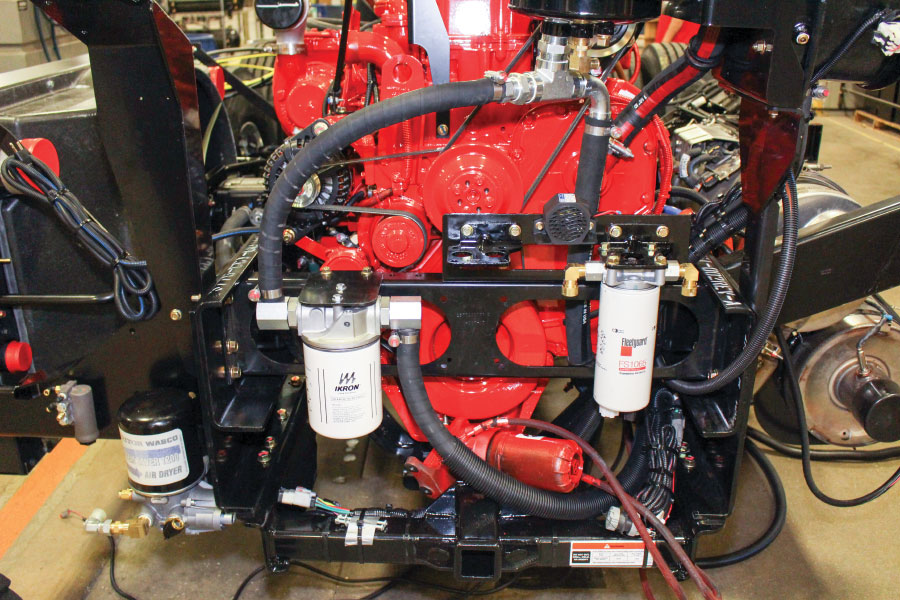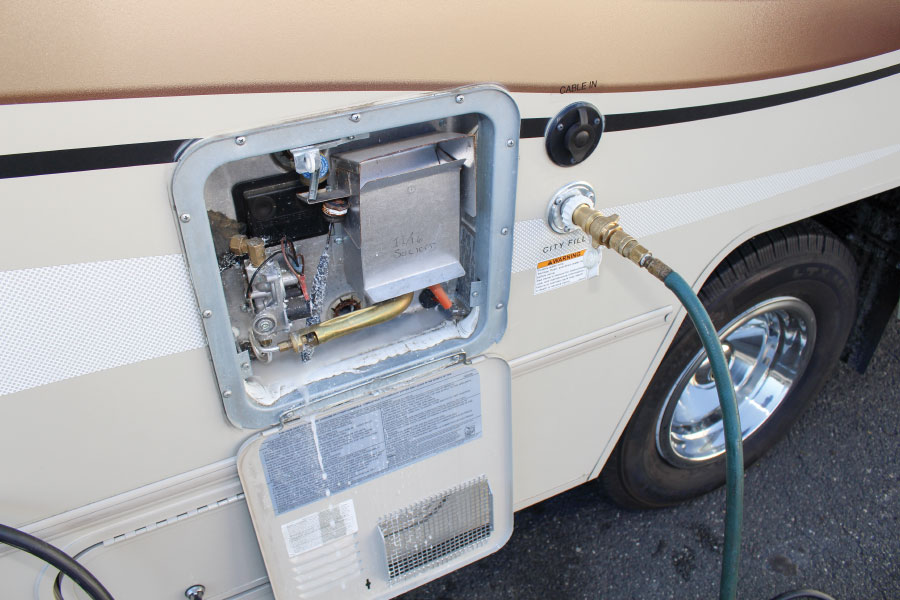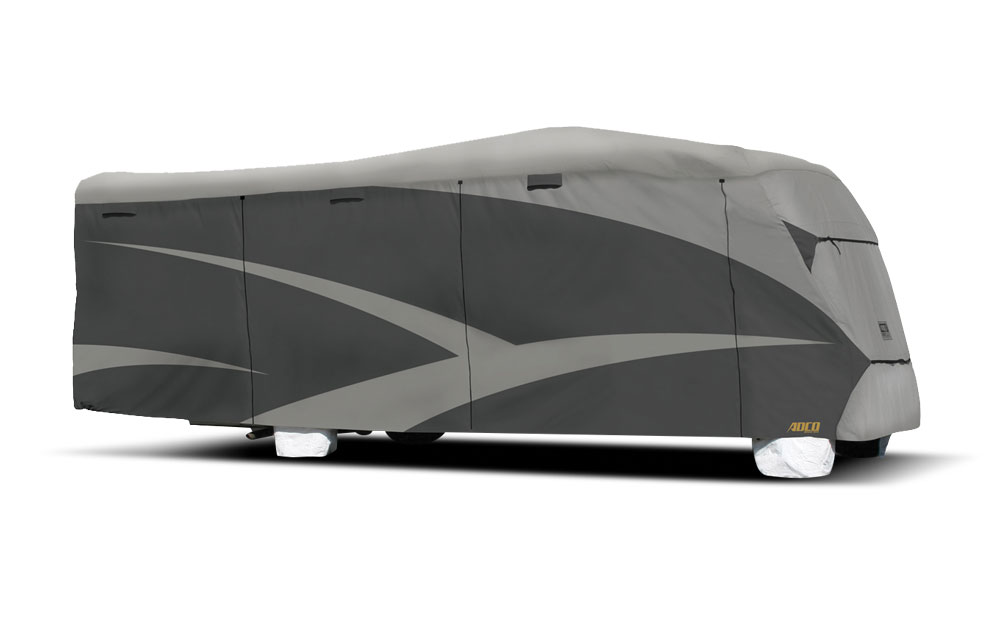A seasonal checklist of must-do maintenance items for motorhome owners
As we move into the colder weather, and the primary camping season comes to a close, we have two kinds of motorhome owners; the users and the storers. The users are the snowbirds who head for sunshine, and adventurers who will use their rigs in winter landscapes throughout the winter months. Alternately, the storers, sorry to see the season end, put their rigs to bed for a long winter’s nap, patiently (or not so) checking off the days, waiting for opening day.

It is always best to cover your motorhome during long-term storage. Don’t use a tarp, as it can cause abrasion damage. Instead, get a quality RV cover sized specifically for your motorhome.
For those of us who aren’t able to use the motorhome again until we can sit comfortably in the shadow of a warm sun-kissed awning, pre-storage maintenance is essential, and getting your motorhome serviced completely now is better for it during storage. It will make spring opening much quicker and easier.
Many of the points that the users need to pay attention to, you will as well. Things like outside seal maintenance, sealing openings underneath to the extent you can, winterizing and chassis and generator maintenance should all be done before long-term storage. Oil and filter changes remove soot and acids from the oil, helping to preserve internal engine parts.

Engine maintenance is best done in the fall, before storage. All filters and necessary fluids should be changed and the chassis should be lubricated.

Whether using or storing your motorhome, change the oil in the fall; consider a winter weight oil if you’ll encounter below-freezing temperatures.
Fuel tanks should be filled before long-term storage, and appropriate gas or diesel additives should be added before fueling. After filling up, make sure to run the treated fuel through the filters and into the engines. Fuel stabilizers help to keep the fuel fresh, and in the case of diesel, prevent gelling, algae growth and more. These additives are a must to keep your motorhome running like new in future seasons.
Vehicles that are stored long term outdoors and on soft ground are prone to accelerated undercarriage rusting. As before, keep an eye on this, and touch up the frame with rust-preventive paint.

Make sure to properly winterize all parts of the coach. Many motorhomes are equipped with a water-heater bypass like this one; check the owner’s manual to find yours.
Cleaning your motorhome before storage is essential, inside and out. It goes without saying that food shouldn’t be stored in the rig, but just smells of spilled and dropped food can be enough to attract a colony. Thoroughly clean all the floors, cabinets and appliances inside and out. Basement storage should also be cleaned and organized.
There are many tales of products that will keep mice at bay, including mothballs, sachet bags, dryer sheets, sonic devices and products like Mouse Free, to name a few. This article is not specifically about mouse-proofing your stored motorhome; however, it is something that should be taken seriously. Eliminate any entry points, and items in the interior that can be used for nesting should be enclosed in sealed bins to reduce the chance the critters will get into them.

When draining the water heater, take the opportunity to flush out the tank (if so equipped). An air hose adaptor makes blowing out the system much easier, just keep the pressure below 40 psi.
Where the climate gets particularly cold, flooded lead-acid batteries are always at risk of damage. If possible, keep them on a charger during the winter using a multi-stage charging system, whether shorepower connected or via solar. If that’s not possible, it’s best to remove them and store them in a climate-controlled area like your basement. If the batteries have been removed and you can’t run your rig every month, make sure you’ve done all the engine maintenance and fuel prep, and you should be OK in the spring.
 Tires are another concern many motorhome owners have when it comes to storage. If you’re storing on concrete or pavement, cover them, and you’re good to go. If you have to park on soft ground, then the tires should be parked on a surface to get them out of the mud and water. Some people prefer to try and take the weight of the RV off the tires; this can stress other parts of the motorhome and is of questionable benefit. As long as the tires aren’t in the mud, are clean, covered and can’t get frozen into the ground, you should be good.
Tires are another concern many motorhome owners have when it comes to storage. If you’re storing on concrete or pavement, cover them, and you’re good to go. If you have to park on soft ground, then the tires should be parked on a surface to get them out of the mud and water. Some people prefer to try and take the weight of the RV off the tires; this can stress other parts of the motorhome and is of questionable benefit. As long as the tires aren’t in the mud, are clean, covered and can’t get frozen into the ground, you should be good.

Your motorhome may have bypasses, low-point drain valves and pressurized water fill in one location.

This motorhome is equipped with a built-in winterizing kit to siphon RV antifreeze into the plumbing system.
Preparing your motorhome for winter is part of RV ownership for may people, but if you keep on top of it, it’ll be easy to accomplish, and your RV travels will be more enjoyable. Plus, you’ll avoid costly mishaps, and your motorhome will be ready for travel prep as soon as the snow melts.





